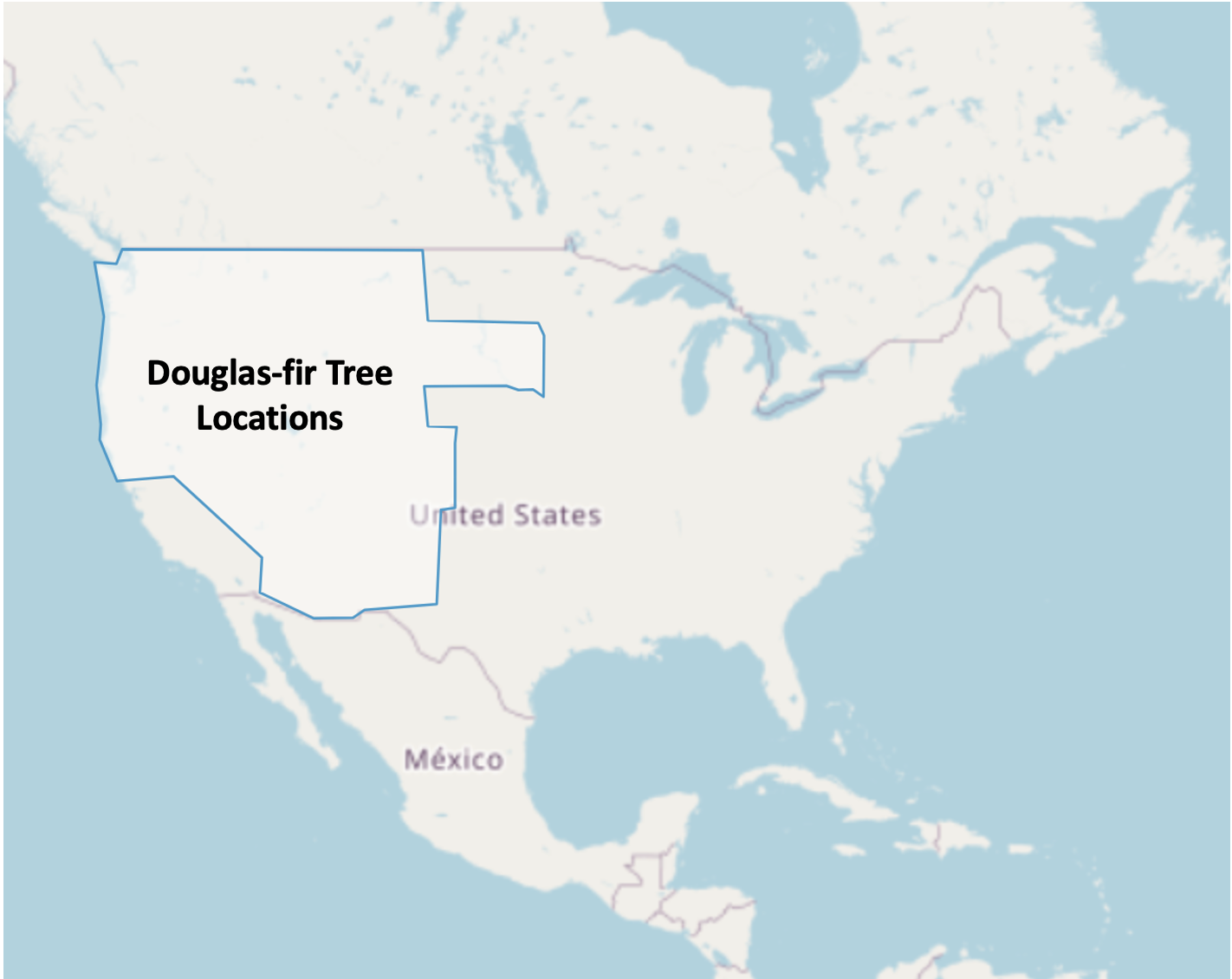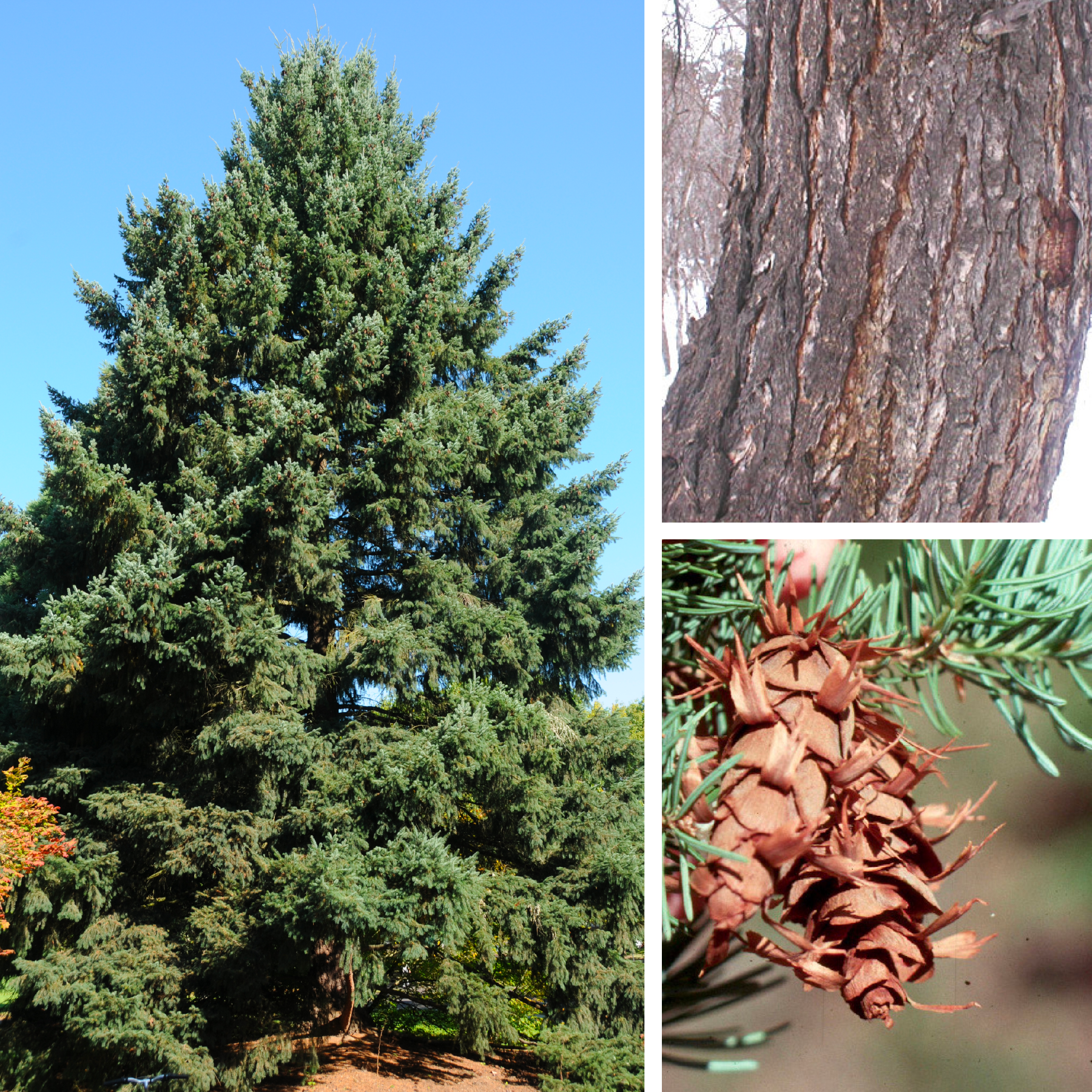NASA Moon Trees - Douglas Fir - GLOBE Observer
NASA Moon Trees - Douglas-fir

The Apollo 14 Mission's Douglas-fir Moon Trees are currently found in the following U.S. states: Arizona, northern California, Colorado, Idaho, Montana, New Mexico, Nevada, Oregon, South Dakota, Utah, Washington, and Wyoming. See the map above showing where the majority of Douglas-fir trees are located in the United States. Please note that Douglas-fir trees are commonly used in landscaping and may be found in parks, arboreta, yards, and other locations well-outside their native range.
Douglas-fir (Pseudotsuga menziesii), also called red-fir, Oregon-pine, Douglas-spruce, and piño Oregon (Spanish), is one of the world's most important and valuable timber trees. It has been a major component of the forests of western North America since the mid-Pleistocene (30). Although the fossil record indicates that the native range of Douglas-fir has never extended beyond western North America, the species has been successfully introduced in the last 100 years into many regions of the temperate forest zone (31). Two varieties of the species are recognized: P. menziesii (Mirb.) Franco var. menziesii, called coast Douglas-fir, and P. menziesii var. glauca (Beissn.) Franco, called Rocky Mountain or blue Douglas-fir. (Source: USDA Forest Service 
How to identify Douglas-fir trees:
Douglas-fir trees are evergreen pine trees with a narrow, pyramid-shaped crown. The needles grow singly (as opposed to clusters) and are about an inch long. Douglas-fir trees produce thin, 3-4 inch long cones with rounded scales. To learn more and see additional photos, see:
Douglas-fir | Forestry | Extension | USU 
Douglas-fir | Virginia Tech Dendrology 
Several free apps will help you identify tree species, including LeafSnap 


Example Images of Douglas Fir Trees:

How to participate in the quest for Douglas-fir trees:
1. Identify Douglas-fir trees and measure their height (and circumference if you have a tape measure) with the Trees tool in the GLOBE Observer app. Make sure you clearly see the top and bottom of the tree and that you can walk to the base of the tree from an origin point of 25-75 feet away from the tree. Before submitting your observation, please type "#MoonTree" in the comment box.
2. The app will notify you if you are within a certain distance from from an existing Apollo 14 Douglas-fir Moon Tree. If you are able to find a specific Apollo 14 Douglas-fir Moon Tree, please take a tree height observation (and optional tree circumference). Please type "#MoonTree" in the comment box.
Note: Our information regarding the location and status of the existing Apollo 14 Moon Trees is based on the NASA Moon Trees Archive 
Accessible Apollo 14 Douglas-fir Moon Trees:
(Click on the links below to learn more about each of the Apollo 14 Moon Trees from the NASA Moon Trees Archive)
New Mexico
Santa Fe, New Mexico. State Capitol Building 
Oregon
Corvallis, Oregon. Peavy Hall Oregon State University 
Eugene, Oregon. Erb Memorial Union University of Oregon. Latitude: 44.0423, Longitude: -123.0599. 1615 Fairmount Blvd, Eugene, OR 97403
Rosebud, Oregon. U.S. Veteran's Hospital. Latitude: 43.2322, Longitude: -123.3694. Centennial Dr, Roseburg, OR 97471
Salem, Oregon. State Capital Building. Latitude: 44.9392, Longitude: -123.0316. Capitol Building at State St NB, Salem, OR 97301
Washington
Olympia, Washington. State Capitol Building. Latitude: 47.037, Longitude: -122.9013. Tivoli Fountain, State Capitol Building; 1285 Capitol Way, Olympia, WA 98501
To see the locations of all known Moon Trees, visit the NASA Moon Trees Archive 








